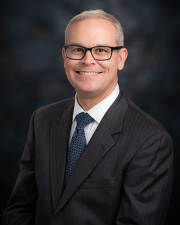
F. Kurtis Kasper
Professor
The University of Texas Health Science Center at Houston
School of Dentistry
Department of Orthodontics
My laboratory applies fundamentals of engineering, materials science, and the biosciences toward the development and evaluation of biomaterial-based technologies to meet clinical needs, with a particular focus on tissue regeneration, cell encapsulation, and the controlled delivery of therapeutics. Each project in my laboratory builds upon the foundational concept that tunable material or environmental parameters can be harnessed to direct cellular and tissue interactions, control the delivery of therapeutics, and positively influence clinical outcomes. Examples of research directions in my laboratory include:
BIOACTIVE CONSTRUCTS FOR TISSUE ENGINEERING
Tremendous effort has been invested in the development of biomaterials capable of actively promoting tissue regeneration, especially in defects affecting musculoskeletal tissues such as bone and cartilage. Although synthetic materials provide an excellent and versatile platform for the fabrication of scaffolds to support tissue regeneration, the materials themselves generally lack the biological activity required to promote tissue repair. In order to impart biological activity to synthetic scaffolds, while retaining the versatility of the materials, my laboratory leverages the culture of cell populations under engineered conditions on three-dimensional scaffolds to direct the differentiation and phenotypic expression of the cells and to introduce biologically active extracellular matrix components into the constructs for tissue engineering applications.
HYDROGELS FOR CELL ENCAPSULATION AND CONTROLLED DELIVERY OF THERAPEUTICS
The prevalence of cartilage-related disabilities is intrinsically linked to the nature of articular cartilage itself, which presents a limited potential for self-repair. Strategies in my laboratory seek to leverage the interplay between cartilage and the underlying subchondral bone, which provides mechanical support and is essential for the homeostasis of articulating joints, through the creation of biodegradable hydrogel constructs for the spatially-directed delivery of tissue-specific growth factors and stem cell populations to promote repair of bone and cartilage at articular interfaces.
Education & Training
Ph.D. - Rice University - 2006







